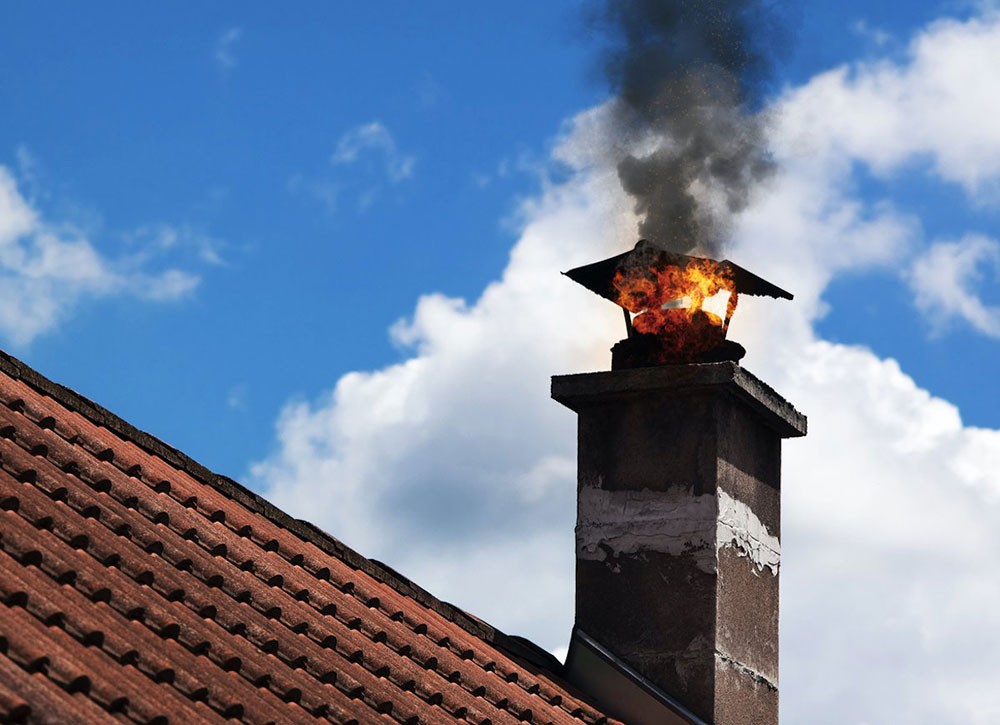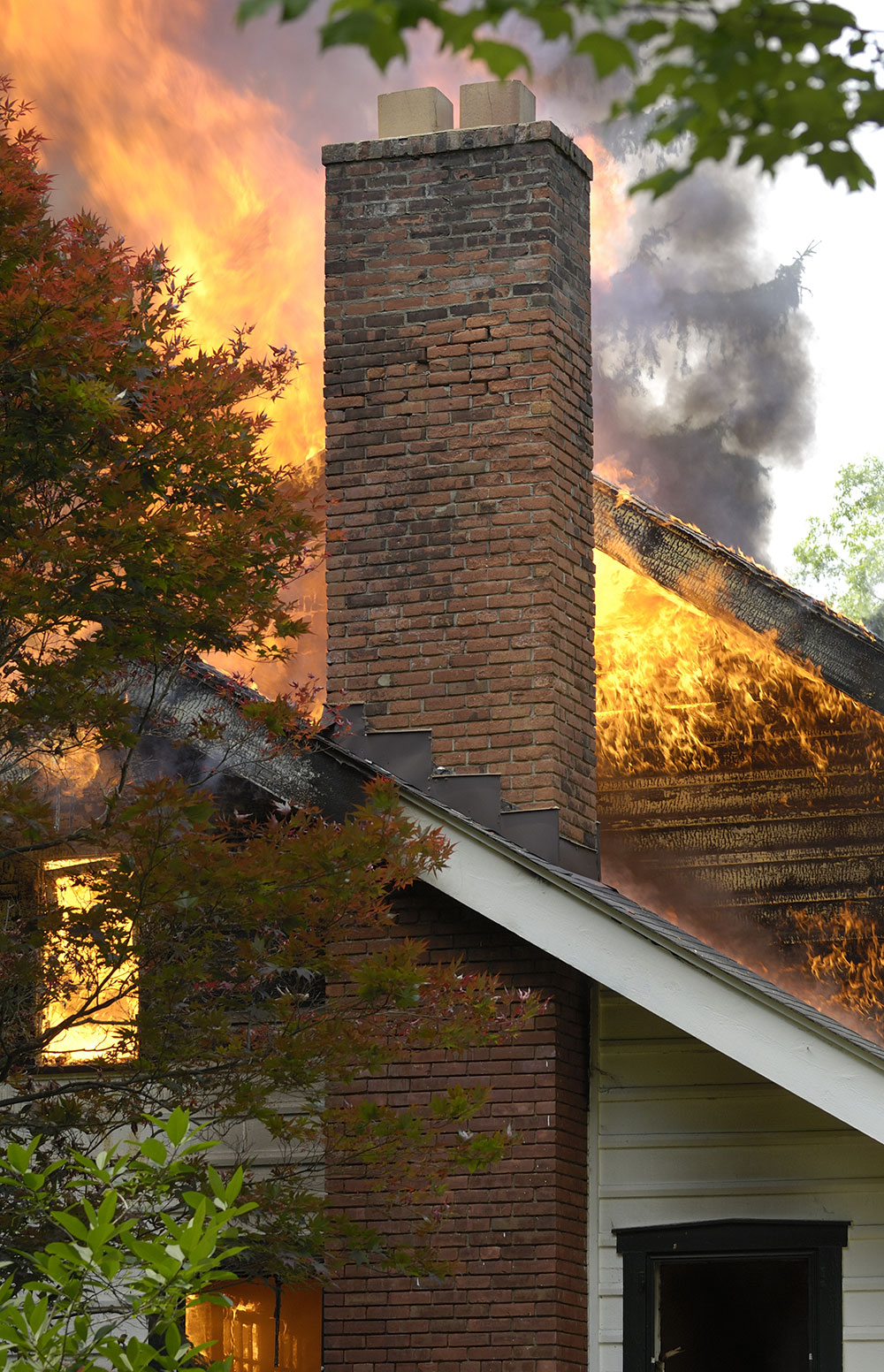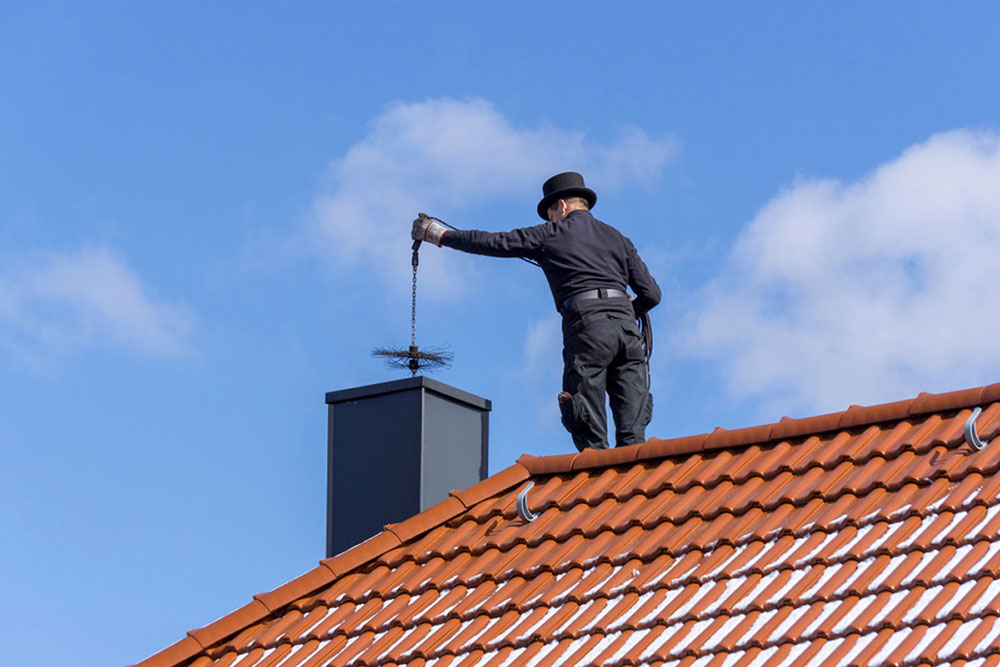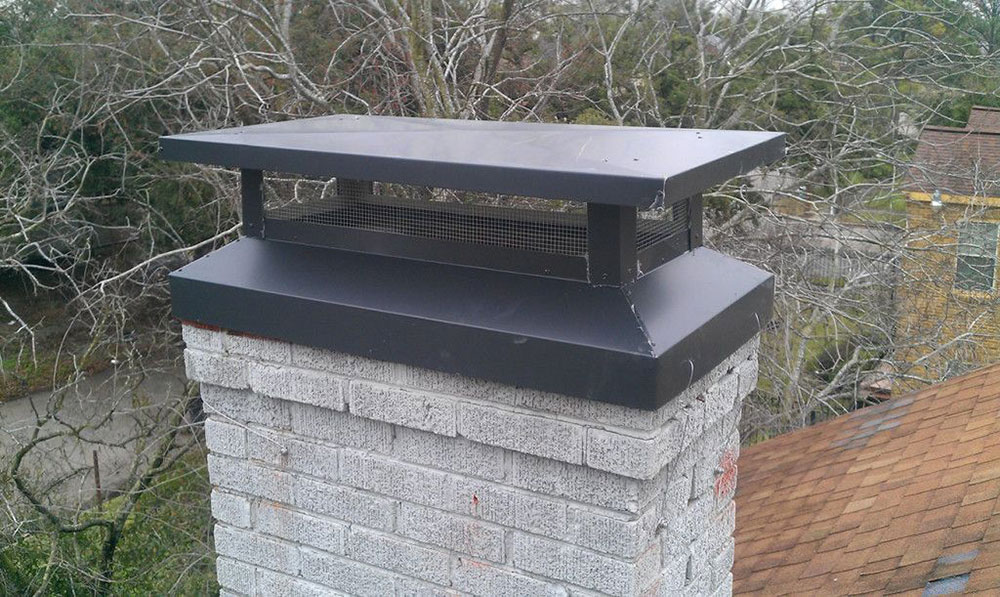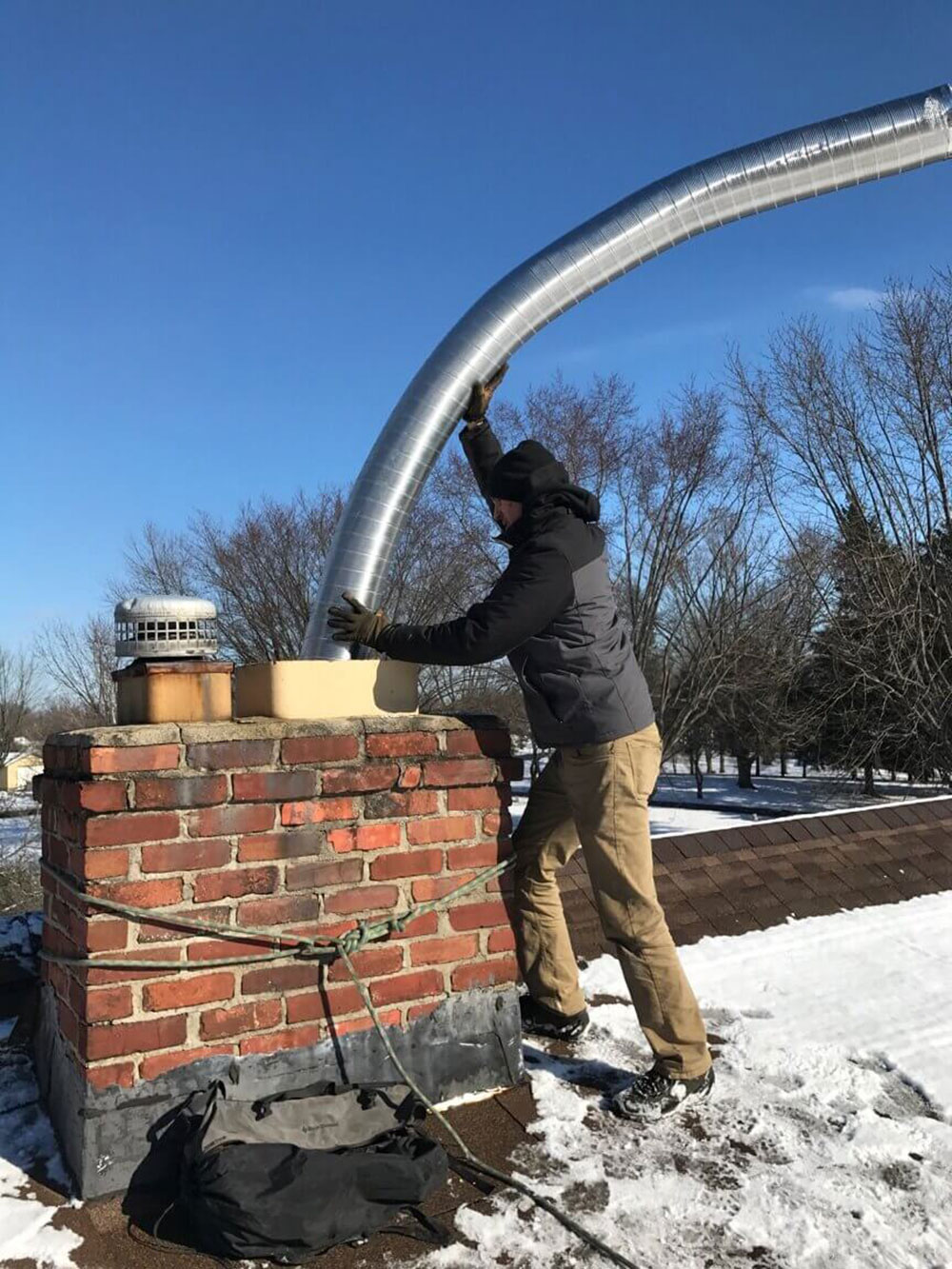Advertisement
Chimney fires are a very common problem all around the world. There are over 25,000 chimney fires per year, and they account for over $120 million in damage to property. They cause thousands of injuries and even deaths!
If you want to continue to enjoy your fireplace or wood stove, you can do so safely. Focus on chimney fire prevention by following the tips below. Think of the threat a chimney fire can cause to your well-being, health, family members, and property.
We will tell you what causes chimney fires and what you can do to prevent them.
So, What Causes Chimney Fires?
To put it simply, chimney fires are caused by creosote buildup in the flue lining of the chimney. Creosote is a by-product of combustion, and it is highly flammable. If there is enough of it in the chimney, and fire sparks reach it, it can easily set on fire.
This substances changes form with temperature. When the temperature in the chimney drops below 250 degrees Fahrenheit, it becomes sticky and condensed, and easily sticks to the walls of the chimney. Then, once the temperature drops below 150 degrees Fahrenheit, creosote becomes dark and flaky. If it catches on fire, it can burn the whole house down.
Here are some signs of a chimney fire:
- Loud cracking and popping noises coming out of the chimney
- An extraordinary amount of dense smoke along with an intense, hot smell
- Deformed creosote with pops of color that looks different from normal creosote
- Warped metal on the chimney or parts of the chimney
- Cracked flue tiles with big chunks missing
- Discolored rain cap
- Creosote flakes coming out of the chimney
- Damaged roof
Chimney fires don’t always come unannounced. Sometimes, they can be explosive and loud. So much so, that even your neighbors and passers-by will notice. A chimney fire can be so loud that you might think a plane is flying right by your house, or you’re under a passing train.
Ways to Identify a Chimney Fire
There are two different types of fires. Both of them are very dangerous.
Free burning
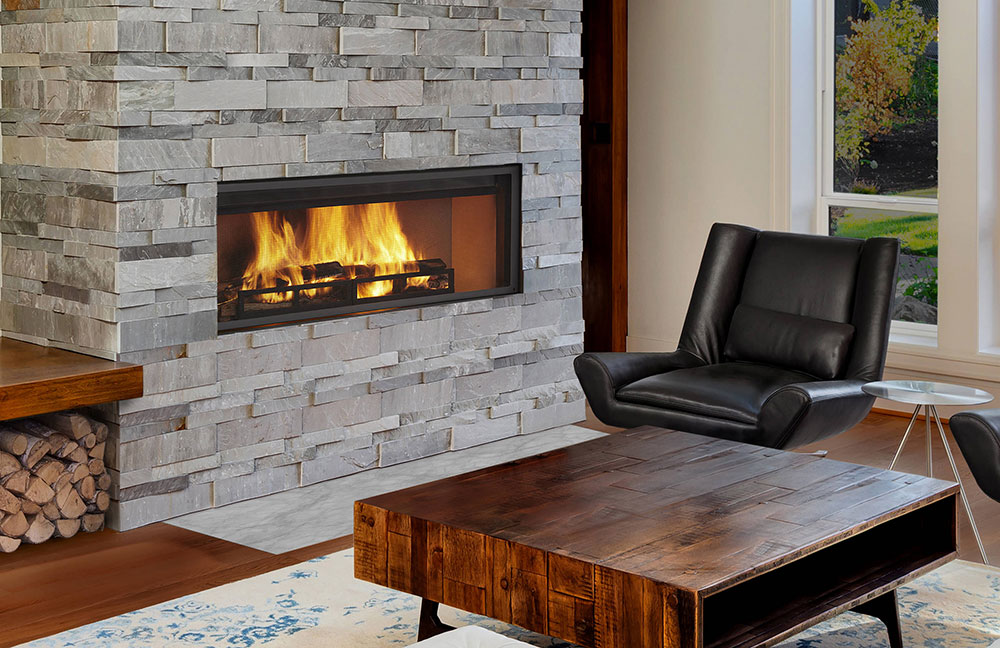
Image source: CR Gas Logs & Fireplaces
A free burning fire takes in lots of oxygen, so it grows very big and loud. It can sound like a plane taking off on the roof of your house. There is a chance that you will hear it before you can see it. Free burning fire is so loud that even your neighbors would be able to hear it. If that’s the case, that’s quite lucky, as they can call the fire department or help you evacuate the premises.
Either way, the fire won’t wait long before expanding. Flames will come out of the chimney or even the top of your house. It is accompanied with lots of smoke.
Slow-burning
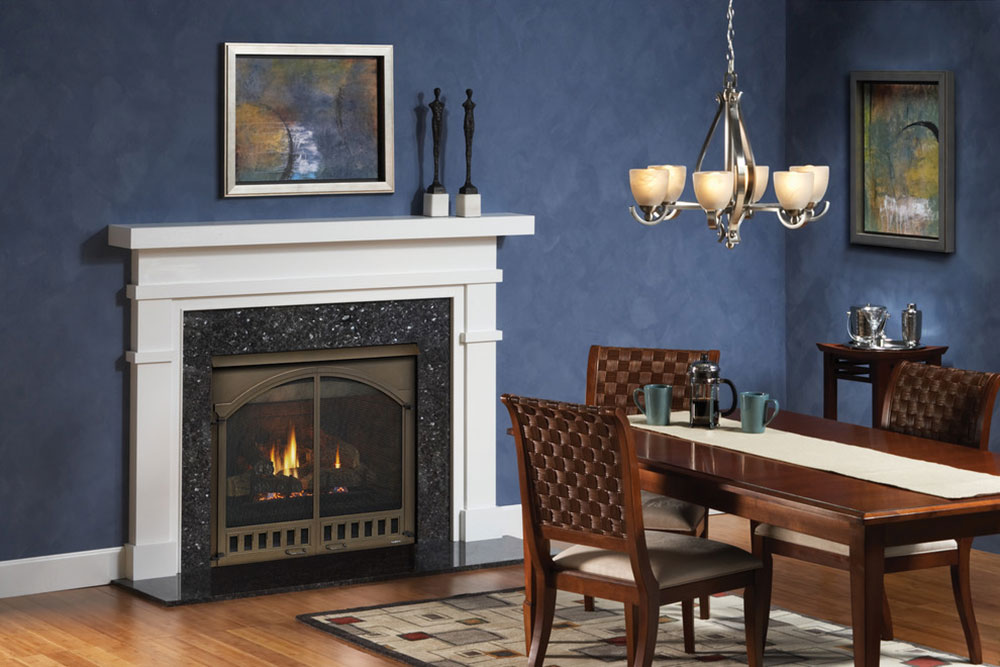 Image source: CR Gas Logs & Fireplaces
Image source: CR Gas Logs & Fireplaces
This type of fire is called slow-burning for a reason. It doesn’t take in as much oxygen, so it takes a while before the fire takes over your house. Unfortunately, it is also more difficult to detect.
A slow-burning fire is incredibly dangerous. The temperature of the fire can get up to 2000 degrees Fahrenheit!
There is no accompanying sound, like in a free burning fire, so you might not even recognize when the fire starts. It could be burning for a while, before setting your whole house on fire.
How to Prevent Chimney Fires
Less creosote
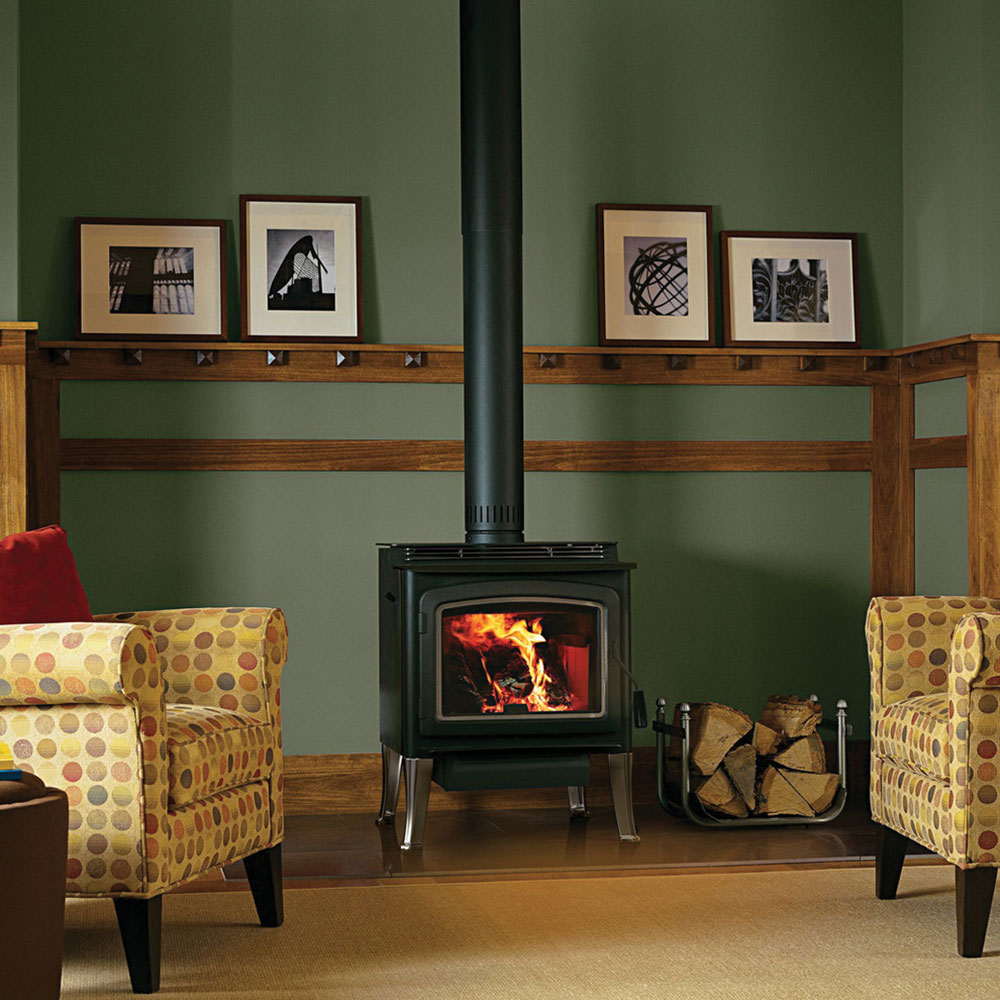 Image source: IronStrike Stoves & Inserts
Image source: IronStrike Stoves & Inserts
Control the production of creosote in the chimney. Catalyst a very clean wood stove that produces less smoke and soot than a regular wood stove. It’s so clean, it even won several prizes and awards! On top of that, it’s more eco-friendly, as it has lower emissions.
Schedule an annual chimney inspection
Get your chimney checked out and professionally cleaned at least once a year. A few more times wouldn’t hurt! If the chimney is in use very often, you should clean it more often too!
A professional chimney cleaning can cost anywhere between $125 and $250 on average.
The reason for getting a professional to check your chimney is that there could be defects that would not be apparent to an untrained eye. You need someone with experience to identify these defects and report them to you.
The specialist you hire can remove soot and creosote from the chimney and tell you about all the damages done to the chimney. In that case, you can also ask them to repair these damages.
Install a chimney cap
Lots of things can get into your chimney through the top. Leaves and bird nests can fuel a chimney fire if they’re reached by loose embers from the fire.
A chimney cap on the crown around the outside opening of the chimney will keep debris and critters out. It will also prevent escaped smoke from reentering the chimney and getting into your house.
In addition to that, a chimney cap will prevent acidic rainwater from entering the chimney and corroding it.
No over-fire
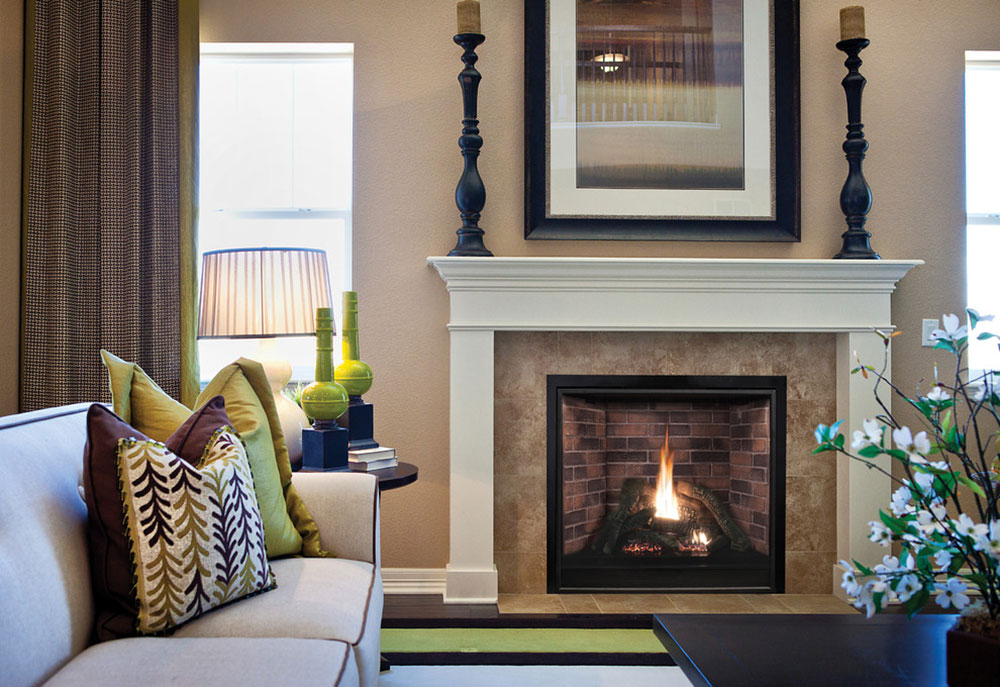 Image source: American Hearth – Empire Comfort Systems
Image source: American Hearth – Empire Comfort Systems
Many people are guilty of over-firing their stoves at times. It seems that a bigger and stronger fire will heat the stove faster. That happens when there is too much wood in the fire, or the fire receives too much oxygen.
It’s quite dangerous, as it can damage the stove and warp the metal. On top of that, the gas from the stove can reach the creosote buildup, which can, in turn, start a chimney fire.
It’s much safer to start a small fire that burns well instead of a big fire that will burn slowly. A bright fire produces less smoke and soot, so it keeps the creosote buildup in the chimney to a minimum.
Small fires are also much safer and much easier to control.
Use a chimney liner
A chimney liner introduces better airflow and exhaust passage for the gasses. It also protects the chimney from overheating and exhaust fumes. This way, the chimney is much easier to keep clean.
Burn “clean” fires
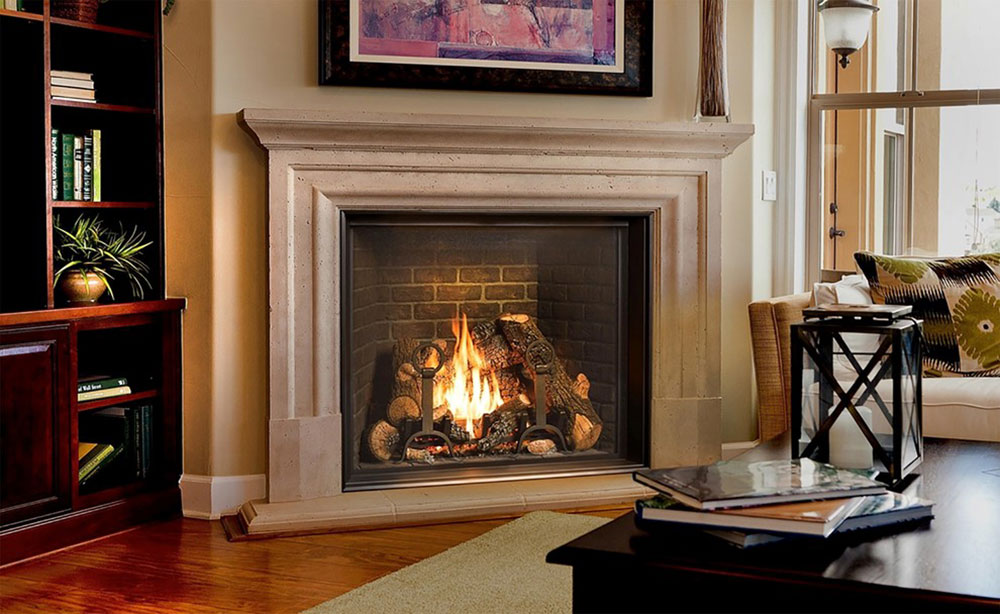 Image source: Fireplace Xtrordinair
Image source: Fireplace Xtrordinair
A “clean” fire refers to a fire that has a bigger flame and produces less smoke. In order to achieve that, you should only burn seasoned or dried out wood.
Perfectly dry wood sounds hollow when you hit it against another piece of wood. It is dark in color. It takes approximately 6 months for the wood to dry enough to be used in a fire.
Many people make the mistake of burning any paper they come across. You should avoid burning glossy pages, wrapping paper, and cardboard. They can release toxic chemicals through the fire.
You should also be careful when throwing paper into an active fire. For once, never put paper on top of the fire. Instead, put it under the fire. This way chunks don’t rise up and clog the chimney.
Ending Thoughts on “What Causes Chimney Fires?”
Fireplaces and wood stoves are designed with safety in mind. They’re meant to heat your home and pose no harm.
The job of the chimney is to get rid of all the by-products of combustion. These include smoke, water vapor, gasses, unburned wood, hydrocarbon, tar fog, and assorted minerals.
When these by-products exit the fireplace into a colder chimney, condensation occurs. Creosote sticks to the chimney walls. This residue is usually black or brown and has a sticky, flaky, or hard consistency. Creosote is highly flammable in all of its forms.
If there is a lot of buildup in the chimney and the flue temperature is high, you can have a chimney fire.
If you enjoyed reading this article on what causes chimney fires, you should read these as well:

